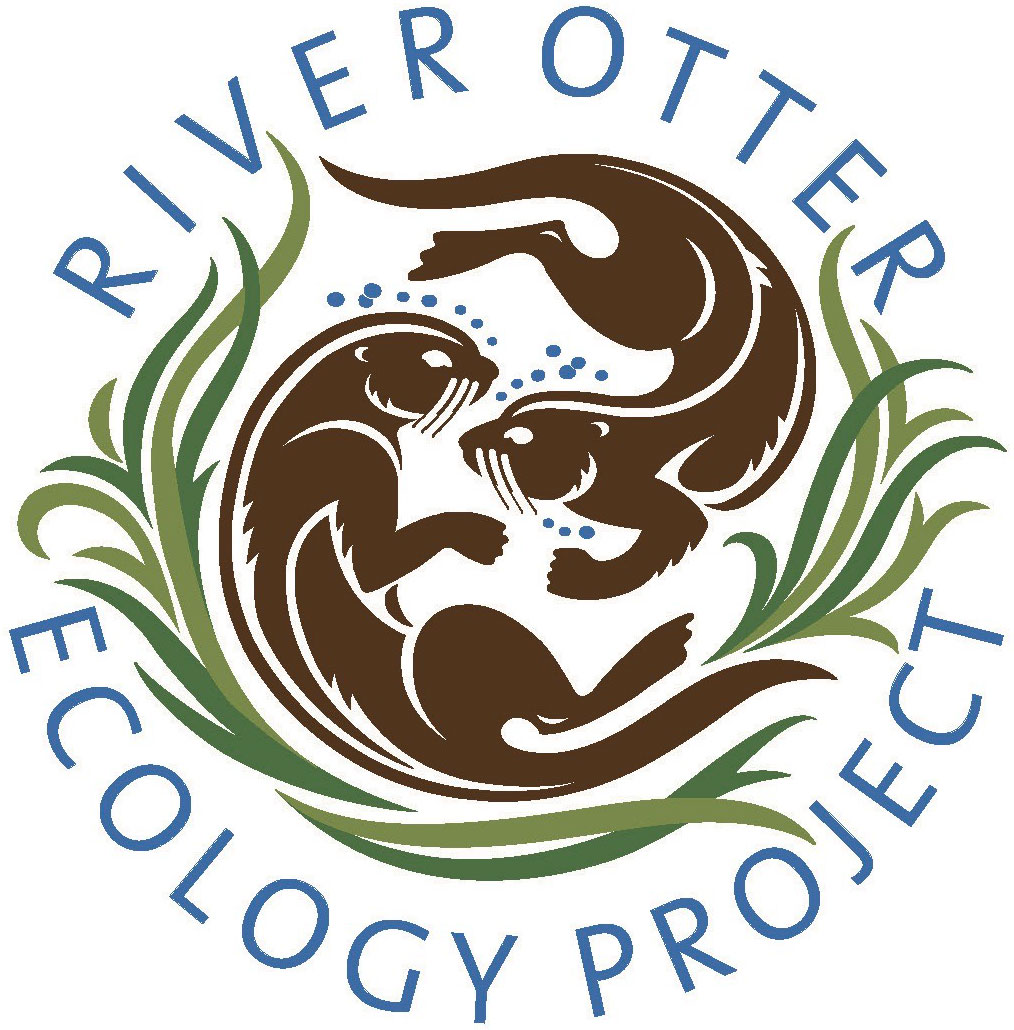I have not really, not yet, talked with otter
about his life.
He has so many teeth, he has trouble with vowels.
— Mary Oliver, from “Almost a Conversation”
By Megan Isadore, Executive Director, River Otter Ecology Project
January 9, 2012
When I was a little girl, I watched a movie called “Ring of Bright Waters,” and then there was nothing in this world I craved more than a romp of otters in our family bathtub. Now I get to see them in their real habitat, which is not a bathtub. I’ve watched them for years on Lagunitas Creek, from the headwaters down into Tomales Bay, swimming, playing, hunting, eating, grooming and lolling. They can be shy, ducking under the water and away when they notice me, and then I watch their ripples disappear and feel guilty. But usually they go about their business without much worry, only keeping a weather eye on me.
A notable exception is in the fall and winter, when they’ve captured a fresh salmon, at which time they completely ignore us humans to gulp, chew, squabble, and concentrate on full-bellied delight. Their joy at the return of the spawners is one reminder of the wonders of nutrient-cycling; in this case, oceanic nutrients moving inland through the homeward migration of sea-going fish like salmon and steelhead. Most of us have seen bears feasting on salmon runs (at least on film), but here in Marin there are no bears left. Well, there might be one bear, but he is a newcomer. Otters, while smaller and less easy to spot, are a charming reminder of the many gifts brought upstream by salmonids. Once the salmon come upstream, spawn and die, they feed the whole watershed through instream decomposition as well as through their predators’ scat. Otters are delighted to help out the process!
Lots of people ask me if I’m upset when the otters eat the vanishing Lagunitas coho salmon, particularly in these difficult years when the population is so desperately-imperiled. I’m really not. My feeling is that the few otters in Lagunitas Creek are entitled to make their living, and it is absolutely not their fault the salmon are almost gone, nor should they bear the burden of our mistakes more than they already do. Like the salmon, they’re already struggling through our mistakes in learning to manage ourselves in the world. The number of spawners eaten by the otters makes no difference to the population.
So what about Lontra canadensis, or North American “river” otters? Since they use all kinds of water, including rivers, creeks, marshes, streams, lakes, estuaries, bays and even oceans as their hunting grounds, the term “river” serves no purpose except perhaps to distinguish them from sea otters. Their range extends from Alaska south to Florida. They mainly eat fish, but can also eat muskrats, birds, amphibia, and there is at least one report of a pet otter stopping at a blueberry bush to systematically strip it of fruits. I’ve seen them chewing very happily on crayfish, and seen plenty of crayfish shells in their scat on the river banks.
Otters have made a comeback since the early 1900s, when trapping, water pollution and habitat destruction had decimated North American otter populations. Improvements in water quality, as well as regulations on trapping and reintroduction projects have helped increase their numbers. They’re seen quite a lot around Marin; I’ve found references to them in Redwood Creek, Santa Margarita Island, San Anselmo Creek, Nicasio Reservoir and even Civic Center Lagoon! I’m told there are catfish in there they enjoy. Some years ago there was a flap for a bit about their nabbing pelicans off Rodeo Beach.
I have a couple of favorite otter stories. Early one morning I came upon four otters patrolling a stretch of creek, searching for spawners and anything else they could find. The four behaved like a precision drill team, in perfect line formation, zigzagging back and forth across the creek and getting their noses into every crevice and under every log. They got quite a few crayfish, and perhaps some sculpin, but I didn’t see them collect any adult salmon that time.
Another morning, I was leading a large group of salmon-viewers on a creek walk. After they heard about the otters, they all wanted to see one. I explained that because of our large group, we would almost certainly not see any otters that day. What self-respecting otter would hang around a bunch of humans?
At that very moment, one of my group said, “Isn’t that an otter?” And in fact, it was, hanging out under the bank not 100 feet away, snacking on a salmon head. As I recall, a couple more made their appearance as well, to everyone’s great delight. Once I started reading about otters, I found that if unthreatened by humans, they’re perfectly happy to share habitat with us without much fear. I love that some wildlife adapts well to human proximity….it enriches our lives hugely, and it’s the closest lots of people ever come to “the wild.”
Next time you’re near water, look for tracks, look for ripples on the surface then a big, slick, sliding graceful water athlete with webbed feet and an appealing expression…..it might be an otter!
